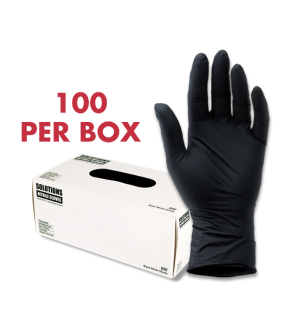Gain access to personalized product screening, the best pricing, rewards, and more!
Most Effective Products
How to Use Pesticide Gel Baits
It can be difficult to control an insect infestation, especially if the insects like to hide in the walls, outlets, and crevices in and around your home. This is when most individuals turn to pesticide gel baits.
These pesticide gel baits are easy to use, but how do you use them, where can you use them, and how do you get the best results for your pest infestation? Learn more about pesticide gel baits with the information and tips in our professional DIY guide.
Choose Your Product and Tool
Most pesticides come ready to use, but some tools might be needed for application. Everyday things you may need can be explained below:
- Scissors to cut the end cap of the gel bait tube if required.
- Gloves for your safety.
- Bait gun applicator: this is optional for some pesticide gel baits.
- Index cards to apply the bait onto. This will help avoid stains on more sensitive surfaces.
How to Use
Step 1: Sanitize the Treatment Area
 Clean the area where you have noticed pest activity before applying the pesticide gel bait.
Clean the area where you have noticed pest activity before applying the pesticide gel bait.
Wipe away any breed crumbs, grease, grime, or other food residue. Use a rag soaked with warm water.
Do not use any bleach or other cleaning chemicals, as this will deter pests away from the bait.
Step 2: Apply the Pesticide Gel Bait
 While wearing gloves, apply the pesticide gel bait where pest activity has been observed.
While wearing gloves, apply the pesticide gel bait where pest activity has been observed.
The pesticide gel bait should not be applied in areas where pets and children can easily reach.
You may apply the pesticide gel bait onto a disposable index card for more sensitive surfaces or fear of staining. Be mindful that this will not be for crack and crevice treatments.
Where to Use
Pesticide gel baits should never be applied in a location that children and pets can reach. Some examples of typically pesticide gel bait locations:
- Kitchens
- Bathrooms
- Countertops
- Cabinets
- Underneath appliances
- Plumbing penetrations
What To Do After Application
Avoid Disturbing Treated Areas
Avoid cleaning or contacting areas treated with the pesticide gel bait.
Follow REI
Refer to your product label to see how long people and pets need to stay out of treated areas.
Inspect and Replace
Check the bait daily and replace it if it has been consumed or dried. The label will have a specific application interval that must be followed.
Only stop reapplying bait when you see the infestation has been controlled.
Repair Entry Points and Other Openings
Seal off any cracks, crevices, and other openings after the infestation has been controlled.
This may require caulking or complete repair.
Store Food In a Sealable Containers
Place any uneaten food items, such as pet food, cereal, etc, in a plastic container with a sealable lid.
This will help encourage pests to feed upon the bait.
What to Expect
Increase in Pest Activity
After using a pesticide gel bait, you may see more insects in the treated area. This is because certain pests like ants leave behind trails for others to follow to the available food source. After feasting upon the bait, the pests will perish.
Key Takeaways
What is Pesticide Gel Bait?
- Pesticide gel bait is an insecticide containing an active ingredient mixed with a food attractant in a ready-to-use syringe.
How Effective is Pesticide Gel Bait
- Some pesticide gel baits are slow-acting, meaning it will take a week or two for full pest control.
Does Pesticide Gel Bait Work?
- Yes, pesticide gel baits can work if used according to the product label instructions. Be sure to apply it where instructed and use the proper amount as instructed. Also, avoid leaving food out and cleaning near the sites treated.












